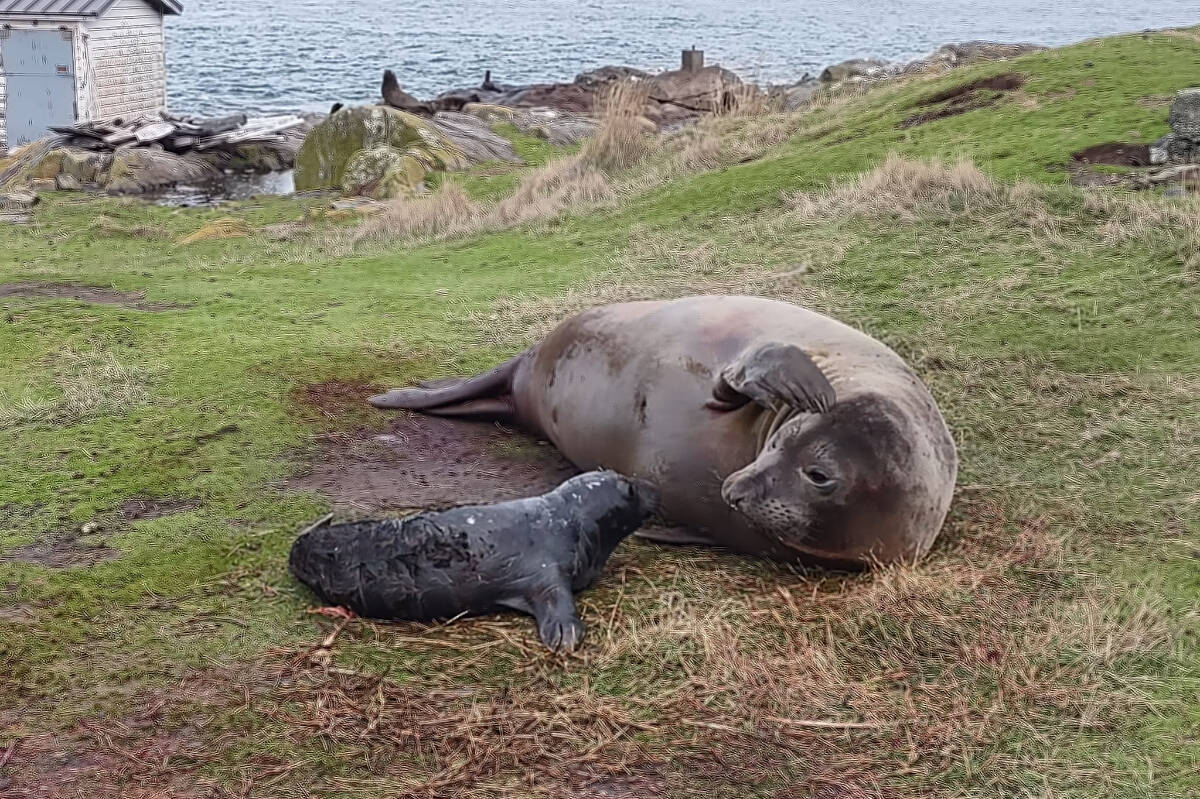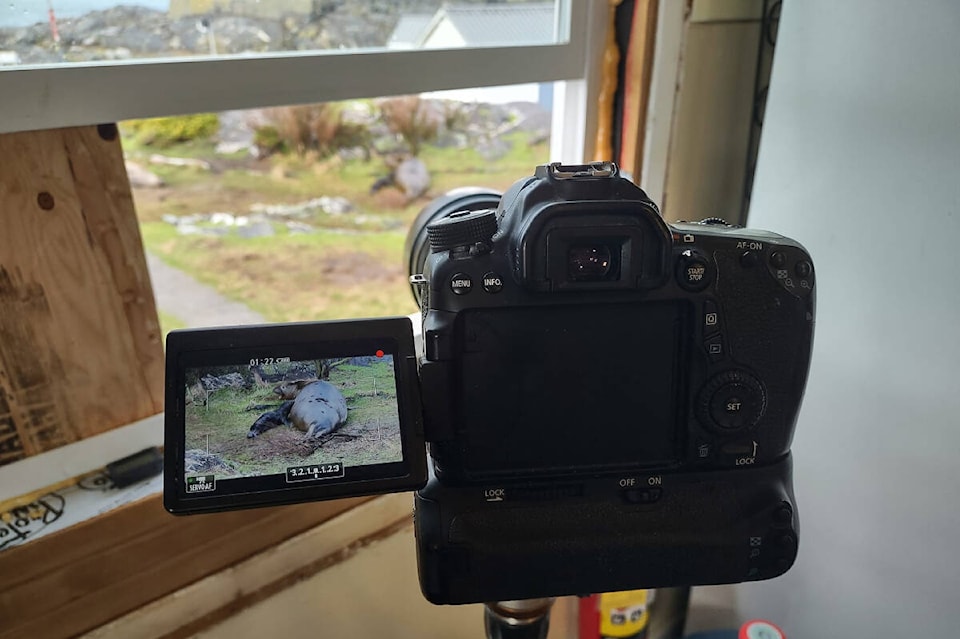A Victoria volunteer channeled his inner David Attenborough when he filmed an elephant seal birth on a little island off East Sooke.
Derek Sterling volunteers with Ecoguardian, a wildlife management program run by Pearson College UWC that looks after the Race Rocks Marine Ecological Reserve.
The island is home to Sterling, a Canadian Coast Guard lighthouse and a wide array of wildlife. On Jan. 13, Sterling was able to capture the moment the population grew by one, recording the birth of an elephant seal pup on the island. Race Rocks is the most northerly birthing colony on the Pacific Coast of North America for the Northern elephant seal, according to a statement from Pearson College UWC.
“It was really awesome. Sometimes you get so involved in the photography that you miss out. So, for example, the first time I did it was still photography, and then I didn’t appreciate it until I looked at the photos. For the second part, I got set up all properly and took the video so I was able to just stand there and enjoy it.”
Safe from inside his house and using a long camera lens, he was able to take in the incredible sight.
During Sterling’s stint on Race Rocks, he is tasked with keeping everything running on the Island, as well as some data recording, particularly for a long project looking at saltwater salinity and temperature monitoring.
“So first thing is this morning, I was down gently moving sea lions off the pier because it becomes dangerous for them if they’re there on low tide,” Sterling said.
“Then I was capturing logs for firewood. I capture them at high tide, wait for the tide to go out and buff them up. And then I’ve already checked my batteries and my solar power system – all before my first cup of tea.”
Having spent decades working as an ecotourism guide around the island, Sterling has long been interested in the volunteer position, but first got involved a couple of years ago. He’s done two stints on Race Rocks.
This current stint is set to last six months – usually, they last two to three, but Sterling jumped at the chance to stay longer and catch the breeding season.
“I’m kind of enjoying the solitary life. Realizing, of course, that with phone and the internet, you’re not as disconnected as that romantic image of the lonely guy at the lighthouse.”
The small group of islands that make up Race Rocks is sometimes called the “Galapagos of the North,” according to Pearson College, due to its high tidal current area that attracts a wide variety of wildlife and plants. It is at various times home to California and Northern sea lions and is also a birthing site for harbour seals.
The area was designated an ecological reserve by B.C. Parks in 1980, restricting public access. Since 1997, Pearson College UWC took over management of the automated lighthouse on the main island, which was first settled around 1860.
Sterling said anybody keen to see the elephant seals can watch them via the island’s webcam, and warned against anyone trying to see them through a boat.
ALSO READ: Greater Victoria’s Trial Islands, Fort Rodd touted as key biodiversity areas
bailey.moreton@goldstreamgazette.com
Like us on Facebook and follow us on Twitter.




